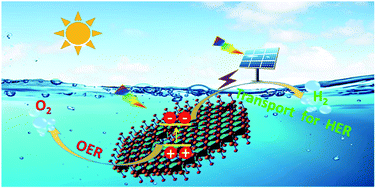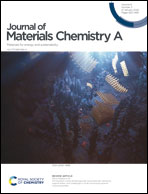Photo-induced charge kinetic acceleration in ultrathin layered double hydroxide nanosheets boosts the oxygen evolution reaction†
Abstract
The oxygen evolution reaction (OER) is vital for a series of renewable energy solutions including water splitting and metal–air batteries. Great effort focused on nanostructure engineering has enabled a substantial advance in cost-efficient OER catalysts. In contrast, this work reports a simple and feasible strategy to improve OER performance via integrating photo-electro activation. Herein, for the first time, we present an interesting photo-enhanced effect on electrocatalytic OER activity for layered double hydroxides (LDHs). Defect-rich ultrathin CoFe-LDH nanosheets (NSs) are demonstrated as a typical semiconducting catalyst to exhibit a nearly 3-fold increase in mass activity upon 1 sun irradiation (100 mW cm−2), higher than those of the most advanced OER catalysts. Photo-induced charge kinetic analyses reveal dynamic optimization in terms of photon harvesting, charge separation and transfer, and surface catalysis. This work describes the compatibility of photo-electro activation over semiconducting LDHs, opening a new avenue to improve catalytic activity with free solar energy.



 Please wait while we load your content...
Please wait while we load your content...